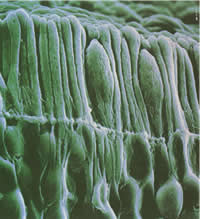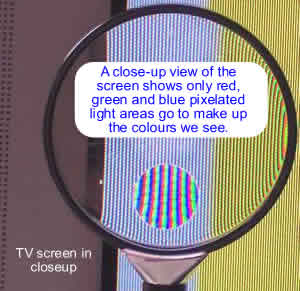    |
|||||||||

The Physics of Colour |
|||||||||
Visible light is made up of photons of electromagnetic energy. Photons of different energy ranges stimulate the cells on the retina in different ways and our brains interpret this by calling that band of energies a 'colour'. The part of the electromagnetic spectrum that has wavelengths between 380nm and 740nm can be detected by the human eye and is therefore called 'visible'. Each band of wavelengths of light stimulate the cones in a different way and we say that there are seven distinct colours in the visible spectrum.
(Note that the 'blue' in this 'rainbow spectrum' is a light blue (it's nearer to 'cyan' than 'blue') and the indigo is nearer to the colour we class as 'blue' in colour addition - a deep royal blue colour - the differences come from the first naming of the colours in the rainbow as ROYGBIV).
Links to related pages:Questions
|
|||||||||
 |
|||||||||






